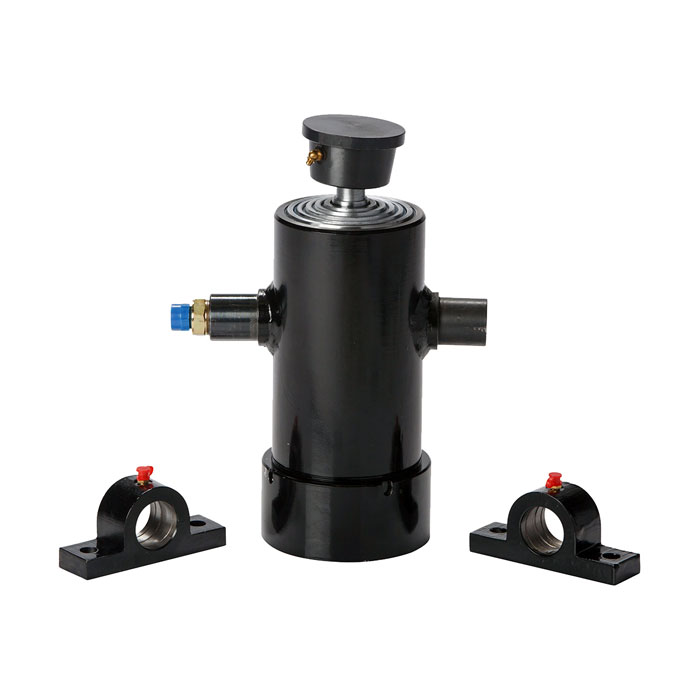Precautions for installation of
hydraulic cylinders
1. The hydraulic cylinder and surrounding environment should be kept clean. The fuel tank must be sealed to prevent contamination. The pipelines and fuel tanks should be cleaned to prevent falling off iron oxide scale and other debris. Use lint-free cloth or special paper for cleaning. Cannot use twine and adhesives as sealing materials. The hydraulic oil is designed according to the design requirements, pay attention to the changes of oil temperature and oil pressure. When there is no load, unscrew the exhaust bolt to exhaust.
2. There should be no slack in the piping connection.
3. The base of the hydraulic cylinder must have sufficient rigidity, otherwise the pressurized cylinder will bow upwards, causing the piston rod to bend.
4. Before installing the hydraulic cylinder into the system, compare the parameters on the hydraulic cylinder label with the parameters when ordering.
5. The central axis of the movable cylinder with a fixed foot base should be concentric with the center line of the load force to avoid causing lateral force. Lateral force is likely to cause seal wear and piston damage. When installing the hydraulic cylinder of a moving object, The direction of movement of the cylinder and the moving object on the guide rail surface is kept parallel, and the parallelism is generally not greater than 0.05mm/m.
6. Install the sealing gland screw of the hydraulic cylinder body, and its tightening degree is to ensure that the piston moves flexibly in the full stroke, without obstruction and uneven weight. Overtightening the screw will increase resistance and accelerate wear, and overly loosening will cause oil leakage.
7. For
hydraulic cylinders with exhaust valve or exhaust screw plug, the exhaust valve or exhaust screw plug must be installed at the highest point in order to remove air.
8. The axial ends of the hydraulic cylinder cannot be fixed, and one end must be kept floating to prevent the influence of thermal expansion. Due to the influence of factors such as hydraulic pressure and thermal expansion in the cylinder, axial expansion and contraction are used. If both ends of the cylinder are fixed, all parts of the cylinder will be deformed.
9. The clearance between the guide sleeve and the piston rod must meet the requirements.
10. Pay attention to the parallelism and straightness of the hydraulic cylinder and the guide rail. The deviation should be within 0.1 mm/full length. If the total length of the bus bar on the hydraulic cylinder exceeds the tolerance, the bottom surface of the hydraulic cylinder support or the contact of the machine tool should be repaired. It is mostly required that if the measuring bus is out of tolerance, the hydraulic cylinder and fixing screws can be loosened, the positioning lock can be removed, and the accuracy of the measuring bus can be corrected.
11. When disassembling the hydraulic cylinder, take care to prevent damage to the thread on the top of the piston rod, the thread of the cylinder port and the surface of the piston rod. It is strictly forbidden to hammer the surface of the cylinder and the piston. If the surface of the cylinder bore and the piston is damaged, sandpaper is not allowed to be polished, and it must be carefully polished with fine oil stone.

